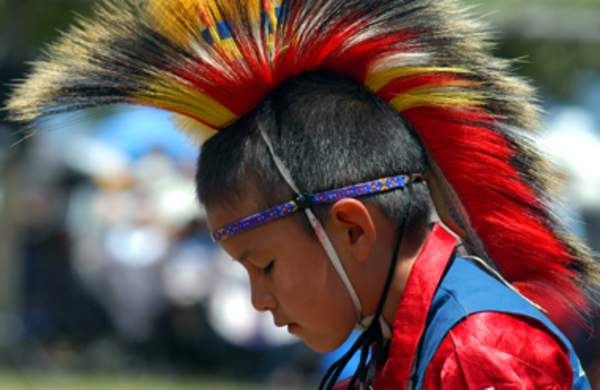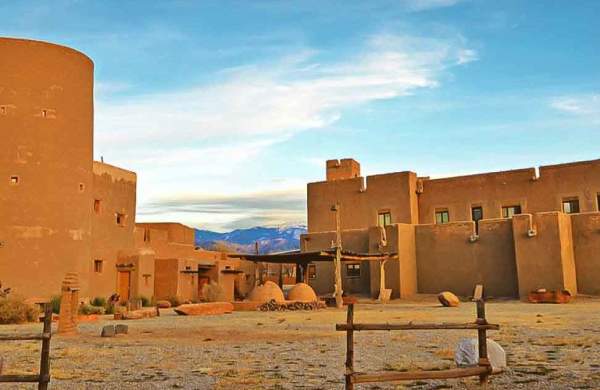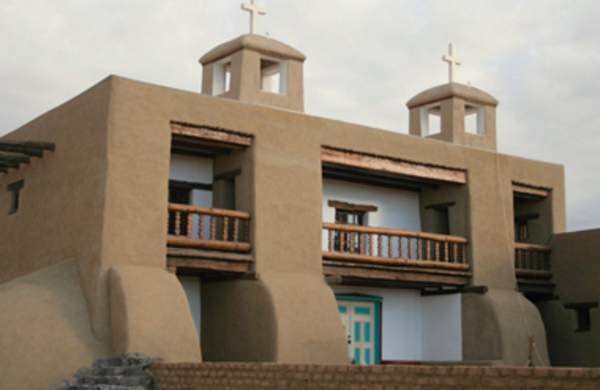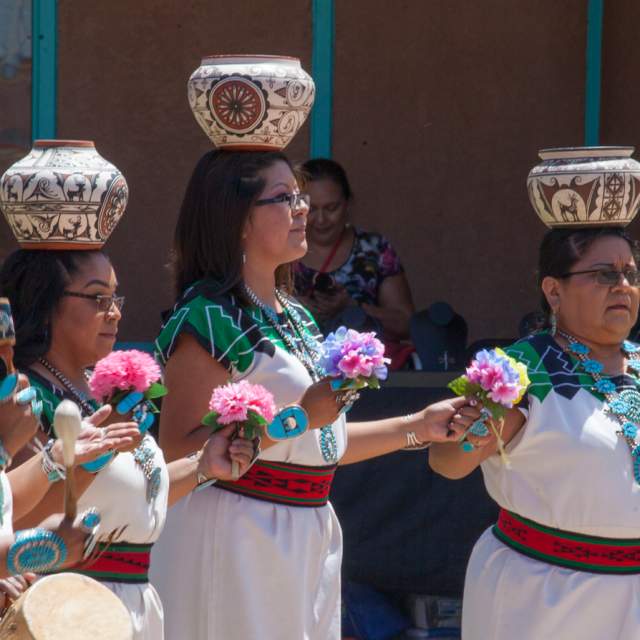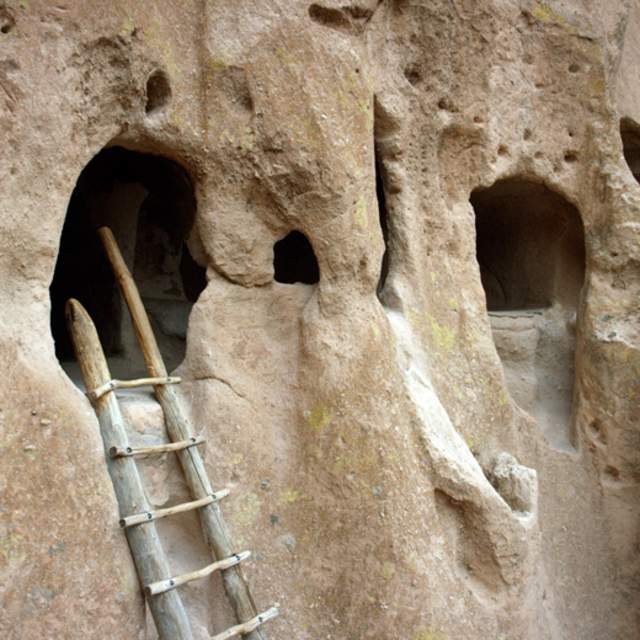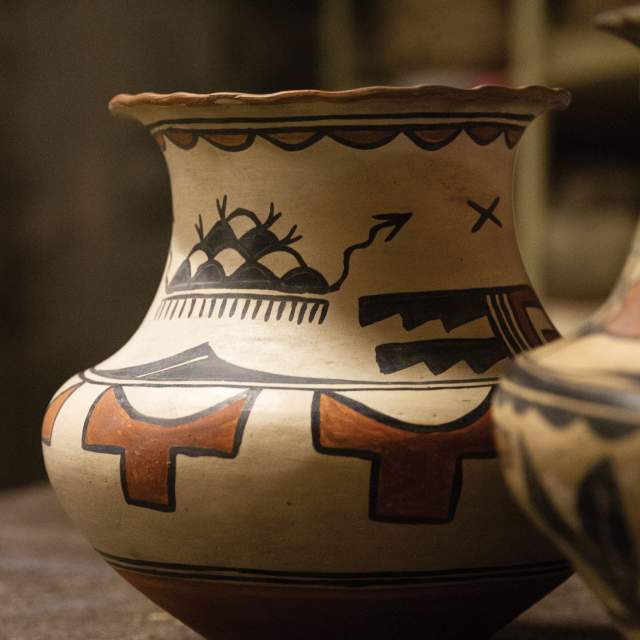New Mexico's Unique Native American Communities
There are 23 Indian tribes located in New Mexico - nineteen Pueblos, three Apache tribes (the Fort Sill Apache Tribe, the Jicarilla Apache Nation and the Mescalero Apache Tribe), and the Navajo Nation.
The nineteen Pueblos are comprised of the Pueblos of Acoma, Cochiti, Isleta, Jemez, Laguna, Nambe, Ohkay Owingeh, Picuris, Pojoaque, Sandia, San Felipe, San Ildefonso, Santa Ana, Santa Clara, Santo Domingo, Taos, Tesuque, Zuni and Zia.
Each Tribe is a sovereign nation with its own government, life-ways, traditions, and culture. All welcome visitors, but please make sure to check ahead of your visit as some communities close unexpectedly for religious or other cultural observations.
Native communities, sites and events held on Tribal lands are open to the public at the Tribal communities' discretion.
Schedules may change suddenly, always call ahead before planning your visit.
Pueblos Tribes & Nations
Acoma Pueblo (Sky City)
Acoma Pueblo (Sky City) There are several interpretations of origin of the name "Acoma". Some believe that the name Acoma comes from the Keresan words for the People of the White Rock, with aa'ku meaning white rock, and meh meaning people…
Cochiti Pueblo
Cochití Pueblo, northern-most of the Keres-speaking pueblos, is home to about 1,500 people. One of its renowned members is the late Helen Cordero, who revived the popular storyteller figurine in 1964. The pueblo is also well known for its…
Isleta Pueblo
Originally established in the 1300s, Isleta Pueblo is home to more than 3,000 members today. The name Isleta is Spanish for "little island". The Spanish Mission of San Agustín de la Isleta was built in the pueblo in 1612 by Spanish Catholic…
Jemez Pueblo
The Pueblo of Jémez is the only remaining Towa-speaking pueblo. It is surrounded by colorful red sandstone mesas and serves as the gateway to the Cañon de San Diego and the Jémez Mountain Trail National Scenic Byway. The pueblo itself is…
Jicarilla Apache Nation
The Jicarilla Apache Nation is located in the scenic mountains and rugged mesas of northern New Mexico near the Colorado border. There are approximately 2,755 tribal members, most of whom live in the town of Dulce. Nomadic in nature until…
Laguna Pueblo
With a population of about 7,700, Laguna Pueblo is the largest Keresan-speaking pueblo. Historians believe the ancestors of the pueblo have occupied the Laguna homelands since at least A.D. 1300. Pueblo history teaches the occupation since…
Mescalero Apache Tribe
The Mescalero Apache Tribe was established by Executive Order of President Ulysses S. Grant on May 27, 1873. There are three sub-bands that comprise the Tribe: the Mescalero Apache, the Chiricahua Apache, and the Lipan Apache. Prior to the…
Nambe Pueblo
Located 20 miles north of Santa Fe at the base of the Sangre de Cristo Mountains, Nambé means "People of the Round Earth" in the Tewa language, and the pueblo people are from the Tewa ethnic group of Native Americans. The Pueblo of Nambé…
Navajo Nation (Dineh)
The largest U.S. Indian tribe, the Navajo Nation consists of more than 298,000 members, about 106,800 of whom live in New Mexico. The reservation includes approximately 27,000 square miles. Its boundaries extend from northwestern New Mexico…
Ohkay Owingeh Pueblo
Juan de Oñate established the first Spanish capital city in New Mexico near Ohkay Owingeh Pueblo (formerly San Juan Pueblo) in 1598. Traditionally, San Juan (O'ke in Tewa) was the center of an Indian meeting ground, its people so powerful…
Picuris Pueblo
Picurís was once one of the largest Tiwa pueblos, but today it is one of the smallest with about 1,801 inhabitants . Spanish colonizer Juan de Oñate originally named the pueblo Pikuria—those who paint. Like those at Taos Pueblo, the people…
Pojoaque Pueblo
Pojoaque was almost destroyed by war and disease, but in the 1930s, survivors returned and fenced off their lands, evicting squatters. Today, about 2,712 people live on pueblo lands. Tribal enterprises include the Cities of Gold Casino…
Sandia Pueblo
Sandia Pueblo's boundaries span 22,877 acres and stretches from the foothills of the Sandía Mountains west to the banks of the Río Grande, just north of Albuquerque. Established in the 1300s, the pueblo's full Tiwa name is "Tuf Shur Tia,"…
San Felipe Pueblo
Keresan is the Pueblo of San Felipe's native language and the Keres language continues to be a living language, taught and spoken by San Felipe families and elders. The pueblo's today totals about 3,185. In 1591, San Felipe was named by…
San Ildefonso Pueblo
Historians believe the original San Ildefonso people abandoned their original villages at Mesa Verde and Bandelier due to drastic changes in the environment. It was on top of nearby Black Mesa, across the Río Grande from San Ildefonso that…
Santa Ana Pueblo
The Santa Ana Pueblo people, who have occupied their current site in central New Mexico since at least the late 1500s, believe their ancestors originated from a subterranean world to the north. The first Spaniards to explore pueblo country…
Santa Clara Pueblo
Santa Clara Pueblo offers visitors a number of highly diverse attractions, from tours of the prehistoric cliff dwellings of Puye to sightseeing, fishing and camping in the nearby canyon. Because Santa Clara Pueblo has such a large land…
Santo Domingo Pueblo
Santo Domingo Pueblo also known as Kewa Pueblo is located near the ancient Cerrillos turquoise mines and its people have an entrenched history of making fine jewelry and heishi out of the colorful stones. The Kewa people historically are…
Taos Pueblo
Taos Pueblo, also known as the place of the red willows, sits at the base of the Sangre de Cristo Mountains. The village, which is one of the oldest continuously inhabited communities in North America, was designated a World Heritage Site…
Tesuque Pueblo
Situated in the soft red-brown foothills of the Sangre de Cristo Mountains, Tesuque Pueblo has stood on its present location since 1200 A.D. As such, it is listed on the National Register of Historic Places. The name Tesuque is a Spanish…
Zia Pueblo
To anyone traveling along the road eighteen miles northwest of Bernalillo, New Mexico, Zia Pueblo is almost invisible. It is situated on a rocky knoll, where it blends into the landscape like a natural feature of the terrain. Although the…
Zuni Pueblo
The Zuni, like other Pueblo peoples, are believed to be the descendants of the Ancient Pueblo Peoples who lived in the deserts of New Mexico, Arizona, Southern Colorado and Utah for centuries. Archaeological evidence shows they have lived…
Visit New Mexico's Dynamic Native Culture Virtually





